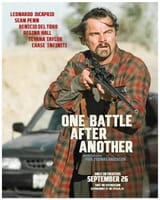>>214082228
So films are shot, and then they're projected.
You don't go straight from shooting to projecting.
Let's go back 50 years when it was slightly simpler. You film on standard 35mm film (which is actually closer to 24-26mm but not the point). You develop the spools into your negatives and actual footage and all the rest. This is a careful, time-consuming process where the first instances of colour-grading were developed. You take that and comb through the footage and literally cut and paste the frames into a coherent film. Once you have a cut you're happy with, you then have to print it for mass production.
If you know anything about photography it's basically the same. You see in a dark room and you have tiny negatives of the photos. You then blow them up and print them larger.
The process has changed now though because of NLEs (editing software). Editing in the pre-digital age was expensive and absolute shit on every level. Editing on a computer is a straightforward, relatively pleasant experience.
All films are edited on computers now, whether they were shot digital or not. So even with a film purist like Nolan, they take the negatives and scan them onto a computer where they do all the digital editing.
The printing is where it gets complicated. Some, like Nolan, essentially have a separate edit for the digital film versus the analogue print. They use colour-grading techniques on the digital footage so that they know what it will look like when they print it on film, and turn it off for the version they actually print. This means that the digital version will (assumedly) have less grain than the physical version unless they artificially add some.
Others, like Villeneuve with Dune, will literally print it onto film stock and then rescan that film for the digital version, to get a natural looking grain on the final version.
The smaller the film stock, the grainier the image (theoretically). Film size is roughly comparable to resolution.












